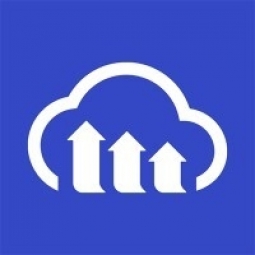下载PDF
James Hardie Designs its Digital Future with Cloudinary’s Digital Asset Management Platform
技术
- 平台即服务 (PaaS) - 数据管理平台
适用行业
- 建筑物
- 建筑与基础设施
适用功能
- 销售与市场营销
- 商业运营
用例
- 供应链可见性(SCV)
- 库存管理
服务
- 云规划/设计/实施服务
挑战
James Hardie 澳大利亚公司通过其网络为众多客户提供服务,包括五金店、建筑商、房地产开发商和建筑师等,并直接与消费者联系。因此,该公司拥有庞大而复杂的销售和营销团队网络,致力于满足这些不同受众的各种需求。James Hardie 澳大利亚公司所有合作伙伴和客户都有一个共同点,那就是需要高质量、不断更新的图像和其他营销内容,展示公司的产品及其在建筑项目中的用途。从消费者和品牌的角度来看,公司的在线渠道必须跟上所有最新的室内和室外设计趋势。特别是对于贸易受众来说,引人入胜且创新的产品组合是必不可少的。通常,公司会在不同的地点进行多次拍摄,没有所有图片的中央存储库,也没有任何共享的归档系统或命名约定。营销团队经常需要寻找以某种产品为特色的图片,并花费数小时手动搜索不同的文件夹来找到它们。
关于客户
James Hardie 成立于 1888 年,总部位于澳大利亚,是现代纤维水泥的先驱,如今已在世界各地广泛使用。如今,该公司是室内和室外建筑产品生产的全球领导者,净销售额超过 25 亿美元,在全球拥有 5,000 名员工。该公司总部位于爱尔兰都柏林。James Hardie 澳大利亚通过其网络为众多客户提供服务,包括五金店、建筑商、房地产开发商和建筑师等,并直接与消费者联系。因此,它拥有庞大而复杂的销售和营销团队网络,致力于满足这些不同受众的各种需求。
解决方案
Cloudinary 的数字资产管理平台使公司能够集中管理其所有图像资产,从而创建一个精简且高度可访问的图像存储库,供澳大利亚的多个团队使用,包括营销、销售、产品、工程和人力资源。在公司新的资产生命周期中,所有新图像都会立即存储在 Cloudinary 的 DAM 中,并根据公司共享的清晰框架进行归档和标记。可以使用链接轻松共享图像“集合”,同时提供有关使用权限和目标受众的具体指导(例如,一些集合针对建筑商,而另一些集合针对消费者受众)。来自整个企业的代表性主题专家小组齐聚一堂,确定描述和标记图像资产的最有效方法,并同意按产品然后按功能构建文件。
运营影响
数量效益
相关案例.

Case Study
Energy Saving & Power Monitoring System
Recently a university in Taiwan was experiencing dramatic power usage increases due to its growing number of campus buildings and students. Aiming to analyze their power consumption and increase their power efficiency across 52 buildings, the university wanted to build a power management system utilizing web-based hardware and software. With these goals in mind, they contacted Advantech to help them develop their system and provide them with the means to save energy in the years to come.

Case Study
IoT System for Tunnel Construction
The Zenitaka Corporation ('Zenitaka') has two major business areas: its architectural business focuses on structures such as government buildings, office buildings, and commercial facilities, while its civil engineering business is targeted at structures such as tunnels, bridges and dams. Within these areas, there presented two issues that have always persisted in regard to the construction of mountain tunnels. These issues are 'improving safety" and "reducing energy consumption". Mountain tunnels construction requires a massive amount of electricity. This is because there are many kinds of electrical equipment being used day and night, including construction machinery, construction lighting, and ventilating fan. Despite this, the amount of power consumption is generally not tightly managed. In many cases, the exact amount of power consumption is only ascertained when the bill from the power company becomes available. Sometimes, corporations install demand-monitoring equipment to help curb the maximum power demanded. However, even in these cases, the devices only allow the total volume of power consumption to be ascertained, or they may issue warnings to prevent the contracted volume of power from being exceeded. In order to tackle the issue of reducing power consumption, it was first necessary to obtain an accurate breakdown of how much power was being used in each particular area. In other words, we needed to be able to visualize the amount of power being consumed. Safety, was also not being managed very rigorously. Even now, tunnel construction sites often use a 'name label' system for managing entry into the work site. Specifically, red labels with white reverse sides that bear the workers' names on both sides are displayed at the tunnel work site entrance. The workers themselves then flip the name label to the appropriate side when entering or exiting from the work site to indicate whether or not they are working inside the tunnel at any given time. If a worker forgets to flip his or her name label when entering or exiting from the tunnel, management cannot be performed effectively. In order to tackle the challenges mentioned above, Zenitaka decided to build a system that could improve the safety of tunnel construction as well as reduce the amount of power consumed. In other words, this new system would facilitate a clear picture of which workers were working in each location at the mountain tunnel construction site, as well as which processes were being carried out at those respective locations at any given time. The system would maintain the safety of all workers while also carefully controlling the electrical equipment to reduce unnecessary power consumption. Having decided on the concept, our next concern was whether there existed any kind of robust hardware that would not break down at the construction work site, that could move freely in response to changes in the working environment, and that could accurately detect workers and vehicles using radio frequency identification (RFID). Given that this system would involve many components that were new to Zenitaka, we decided to enlist the cooperation of E.I.Sol Co., Ltd. ('E.I.Sol') as our joint development partner, as they had provided us with a highly practical proposal.

Case Study
Intelligent Building Automation System and Energy Saving Solution
One of the most difficult problems facing the world is conserving energy in buildings. However, it is not easy to have a cost-effective solution to reduce energy usage in a building. One solution for saving energy is to implement an intelligent building automation system (BAS) which can be controlled according to its schedule. In Indonesia a large university with a five floor building and 22 classrooms wanted to save the amount of energy being used.

Case Study
Powering Smart Home Automation solutions with IoT for Energy conservation
Many industry leaders that offer Smart Energy Management products & solutions face challenges including:How to build a scalable platform that can automatically scale-up to on-board ‘n’ number of Smart home devicesData security, solution availability, and reliability are the other critical factors to deal withHow to create a robust common IoT platform that handles any kind of smart devicesHow to enable data management capabilities that would help in intelligent decision-making

Case Study
Splunk Partnership Ties Together Big Data & IoT Services
Splunk was faced with the need to meet emerging customer demands for interfacing IoT projects to its suite of services. The company required an IoT partner that would be able to easily and quickly integrate with its Splunk Enterprise platform, rather than allocating development resources and time to building out an IoT interface and application platform.






